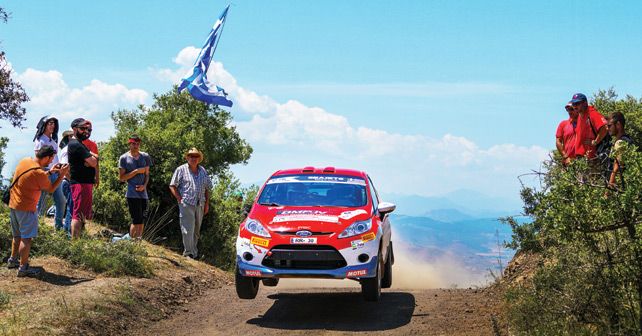
Competing on the global stage can be tough, if you are always winning it.
A couple of years ago, while being pestered for quotes and information, a prominent Indian motorsport participant became apparently very annoyed and upset about Indians always having to go abroad to compete at a professional level at well-run events.
Why the same kinds of series, championships and venues could not be arranged and run smoothly in India, he asked while getting quite heated. Put on the spot, I responded by telling him that besides the obvious issues there is an in-built appeal to be able to see the world and compete not just with the best of your own country but with others too. He went silent, and I didn’t give his outburst much thought.
Until Gaurav Gill and Amittrajit Ghosh competed in WRC-2 and ERC-3, respectively, the regulations in the second tier of the World Rally Championship and the third tier of the European Rally Championship were as different as different approaches of Gill and Ghosh against well-prepared pros. Gill had full backing from MRF Tyres when he competed with them in the Indian National Rally Championship and also the Asia-Pacific Rally Championship. And now, also in WRC-2 where they have tied up with the WRC championship winning M-Sport squad.
Ghosh, on the other hand, is a privateer in ERC-3, and while not as successful as Gill, he is very clearly India’s second-best rally driver at the moment. He has proven that with rally wins and title wins in INRC, as well as by winning the Acropolis Rally – his debut in the ERC-3 class.
But he has done this without the same kind of backing that Gill has received, and it’s a problem that extends to other drivers in India too. Events don’t run up to par and because of the relatively lower returns from corporate involvement in motorsport, and sponsors keep their distance. CS Santosh faced the same problems and took to starting a Ketto fundraiser to keep his Dakar Rally dream alive before Hero came along and turned him into a factory rider, who can now focus on getting better at his craft.
And even drawing manufacturer support is no guarantee that one will always have it. Just ask Raj Singh Rathore and Sarath Kumar, who got left in the lurch by Polaris India and Mahindra, respectively. Given their huge financial muscle, serious involvement in motorsport by Maruti-Suzuki could be to four-wheel rallying and racing as TVS is to two wheels. But that scenario is a purely hypothetical one.
What is apparent is that without proper support from a manufacturer or access to sponsors, there’s only so much that Indian motorsport participants will be able to do with their own funds. Creating the scenario for more of them to have the kind of success that Gill and Santosh have had will create a cyclical pattern that others could fall into. But of course, chicken and egg discussions regarding Indian motorsport are nothing new. What is new, however, is the willingness of competitors to take a chance and hope for the best. This was perfectly exemplified by Santosh’s debut Dakar Rally outing when all spending was pretty much out of pocket.
It’s a worrying thought that one has to spend lakhs and maybe even crores of their own money before being able to find an effective platform with which to test themselves internationally, even if they are the best at what they do nationally.























Write your Comment